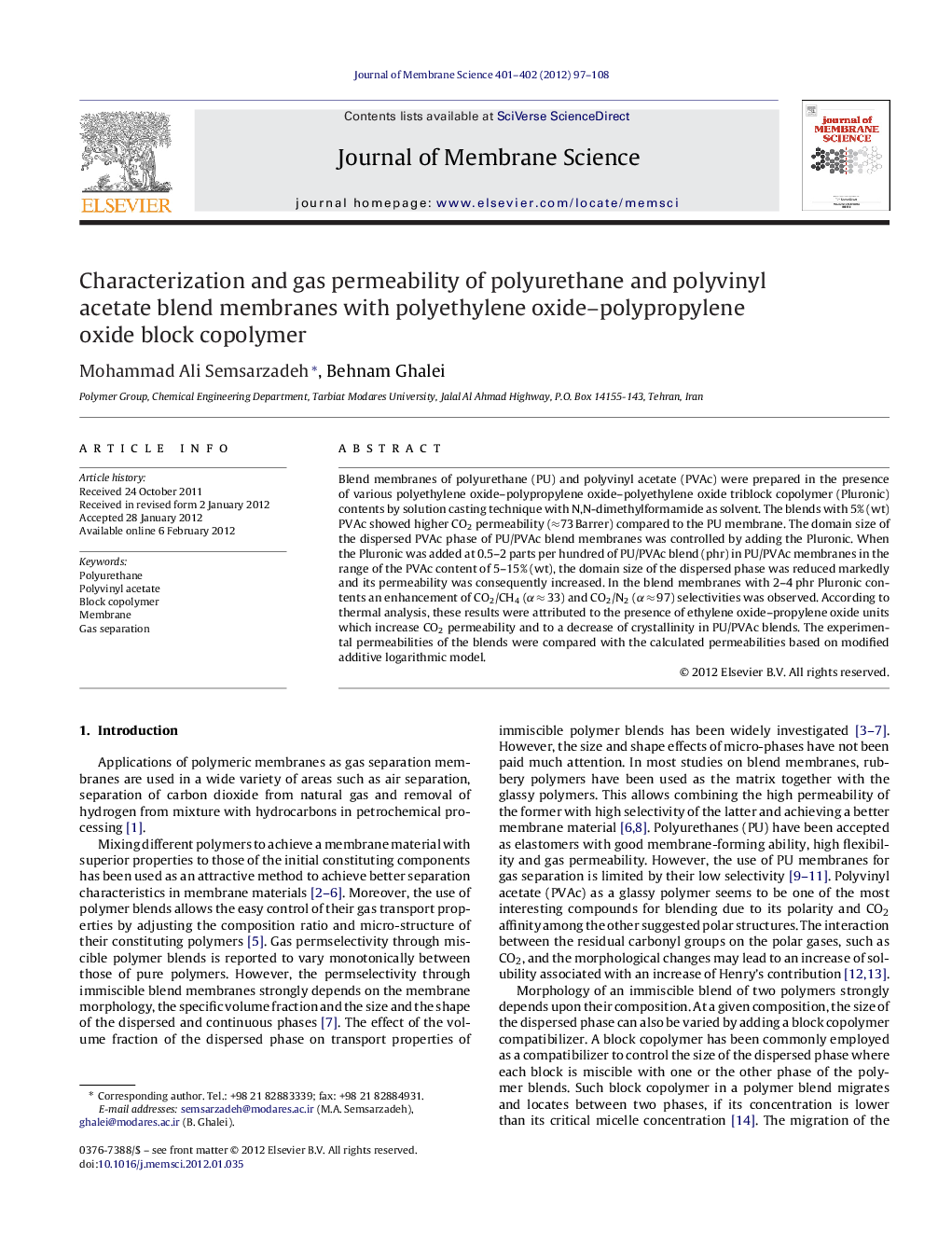| Article ID | Journal | Published Year | Pages | File Type |
|---|---|---|---|---|
| 634994 | Journal of Membrane Science | 2012 | 12 Pages |
Blend membranes of polyurethane (PU) and polyvinyl acetate (PVAc) were prepared in the presence of various polyethylene oxide–polypropylene oxide–polyethylene oxide triblock copolymer (Pluronic) contents by solution casting technique with N,N-dimethylformamide as solvent. The blends with 5% (wt) PVAc showed higher CO2 permeability (≈73 Barrer) compared to the PU membrane. The domain size of the dispersed PVAc phase of PU/PVAc blend membranes was controlled by adding the Pluronic. When the Pluronic was added at 0.5–2 parts per hundred of PU/PVAc blend (phr) in PU/PVAc membranes in the range of the PVAc content of 5–15% (wt), the domain size of the dispersed phase was reduced markedly and its permeability was consequently increased. In the blend membranes with 2–4 phr Pluronic contents an enhancement of CO2/CH4 (α ≈ 33) and CO2/N2 (α ≈ 97) selectivities was observed. According to thermal analysis, these results were attributed to the presence of ethylene oxide–propylene oxide units which increase CO2 permeability and to a decrease of crystallinity in PU/PVAc blends. The experimental permeabilities of the blends were compared with the calculated permeabilities based on modified additive logarithmic model.
Graphical abstractFigure optionsDownload full-size imageDownload high-quality image (88 K)Download as PowerPoint slideHighlights► The introduction of 5% PVAc into PU matrix improved the CO2 permeability up to 70%. ► The PVAc phase domain size in PU/PVAc blend membranes was controlled by Pluronic. ► By addition of 0.5 phr Pluronic to the blends, permeability of membranes increased. ► The results of permeability tests confirmed high CO2 permeability, up to 75 Barrer. ► The membranes have shown high CO2 selectivity (CO2/N2: 162).
